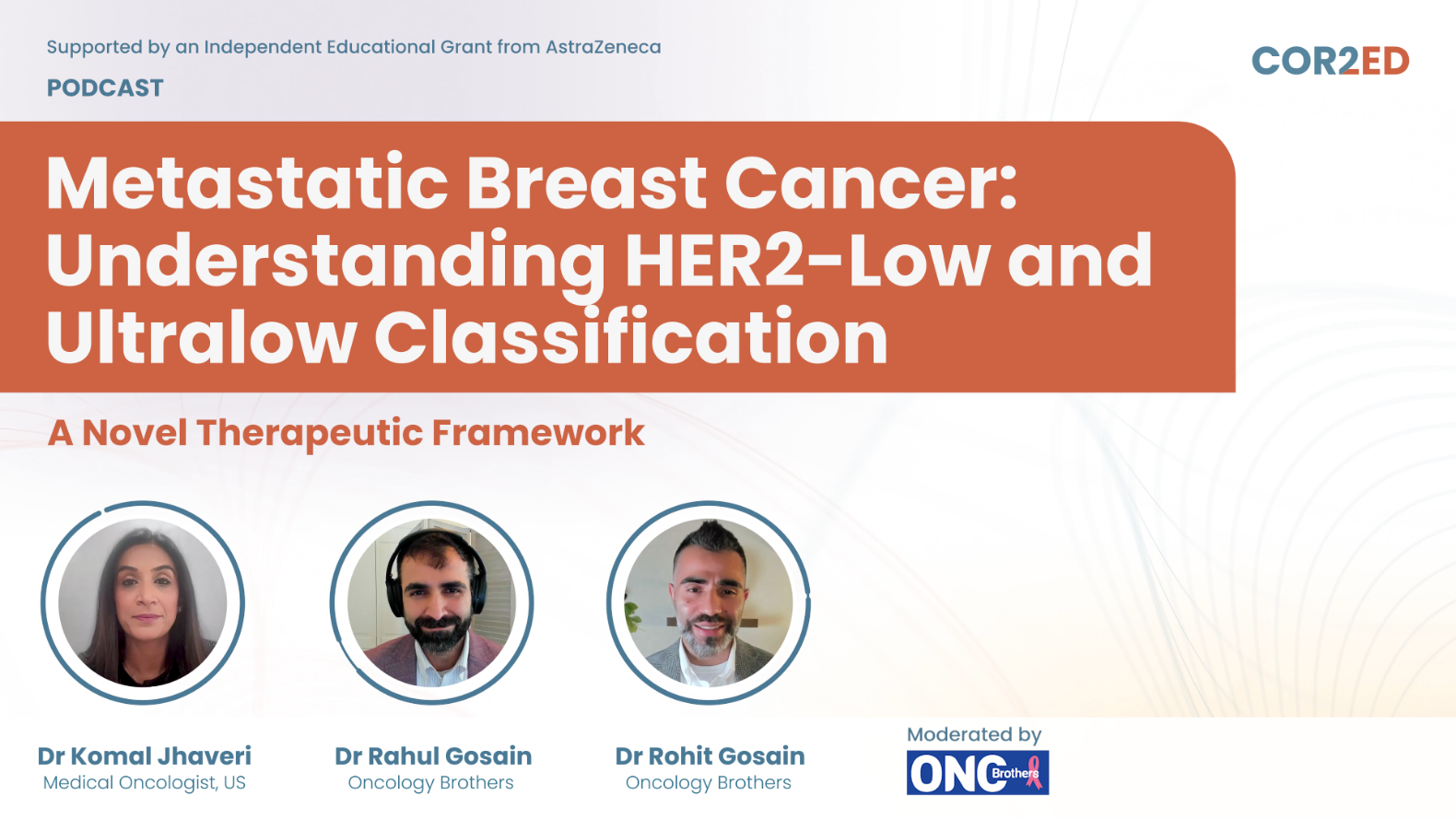PARP inhibitors in Combination with NHAs
Hello, I’m Andrew Armstrong, a medical oncologist at Duke University in the United States.
I’d like to take you on a patient journey, looking at combination novel hormonal agent use with PARP inhibition starting with a case. We have a 66-year-old gentleman who presents with de novo metastatic hormone sensitive prostate cancer. He’s got a strong family history of breast cancer, PSA of 110, and you treat him for his metastatic disease with chemo hormonal therapy.
However, he starts to progress within a year with a PSA that rises from 0.2 to 14, and now you’re faced with metastatic castrate resistant prostate cancer in this patient. You’re now going to consider a potent AR inhibitor such as abiraterone or enzalutamide. As I choose between abi and enza, I recognise that the efficacy data for these choices in men with the mCRPC is very similar.
The risks and benefits of choosing between abiraterone and enzalutamide have been clear for many years, where the risks are largely known and associated with the use of prednisone for abiraterone, mineralocorticoid excess, metabolic side effects and immune suppression. While enzalutamide can result in increased fatigue, falls, hypertension and some cognitive effects. And therefore, the choice may depend on drug-drug interactions, co-morbidities, costs and patient preference.
It's important to realise that, as we treat men with advanced prostate cancer, genetic testing is now standard of care and recommended by all international guidelines. This typically is germline testing in all men, either saliva or blood testing, or tumour or liquid biopsy testing that can identify somatic only alterations that may be actionable and guide the use of PARP inhibitors or PD-1 inhibitors. We recommend germline testing in all men with metastatic prostate cancer, and our case underwent germline testing and identified a pathogenic BRCA2 mutation. This explains his family history and his presentation with more aggressive prostate cancer. We know that men with mCRPC and a BRCA2 mutation tend to have worse outcomes with monotherapy with an NHA.
The current data support the use of NHA PARP combinations in the first line setting for mCRPC patients like our case, who have a pathogenic BRCA mutation. There are a number of trials that have now been completed and either published or presented that have demonstrated significant benefits to our patients in this setting from the combinations.
We have TALAPRO-2, PROpel and the MAGNITUDE study, each of which has shown benefits, particularly in BRCA2 patients, but also in patients with homologous repair deficiencies and even in an unselected patient population in the TALAPRO-2 and PROpel studies. We have combination therapies with either abi plus olaparib or talazoparib plus enzalutamide in all-comers, and we have particular benefits as seen in delays in rPFS and improved overall survival in patients in the TALAPRO-2 and in the PROpel studies.
This table describes the different hazard ratios and improved outcomes for all-comer patient populations, as well as subgroups defined by homologous repair and BRCA alterations, where you can clearly see greater magnitudes of benefit in those patients that have BRCA mutations. Now these are cross-trial comparisons. They are not meant to be comparable, but you can see differences in efficacy across these studies in relatively similar patient populations.
When we look at the TALAPRO-2 and PROpel studies that were positive for their primary endpoint of delaying rPFS in a biomarker unselected population, we see very similar hazard ratios, whether we look at independent blinded review or using investigator assessments. The hazard ratios are very similar, suggesting greater benefits in delaying radiographic progression or death with the combination as compared to an ARSI monotherapy.
However, for MAGNITUDE, which uses niraparib, we saw no clear benefits of the combination, suggesting that for that PARP inhibitor, the benefits were isolated to the BRCA population.
When assessing the benefits of delaying progression, it's also important to look at, is there a benefit on survival and is there greater benefits to the patient over risks? In PROpel the most mature of the data sets, we saw a 7.4 month survival advantage. The overall survival data is not mature yet in TALAPRO-2 and MAGNITUDE and the greatest survival advantage, again, was seen in the BRCA mutated patients with a hazard ratio of 0.29, a substantial delay in the risk of dying of prostate cancer with those men with BRCA2 mutations who were treated with the combination of abiraterone and olaparib.
When trying to decide between the PARP and AR combinations, largely we're going to be making decisions based on efficacy, but also based on safety. We know that PARP inhibitors can cause cytopenias, particularly anaemia, which we see greater proportions of patients experiencing with talazoparib followed by niraparib, followed by olaparib. And again, cross-trial comparisons can be different, but at least for safety, the adverse event reporting system is very similar. We can also see nausea, vomiting and fatigue among the more severe adverse events that are a class effect of these combinations.
In the end, our patient will be faced with that choice of a potent AR inhibitor, plus a PARP inhibitor based on his own preferences, the availabilities and the co-morbidities of that patient. There is no right or wrong answer here. This patient should be offered combination, more intensive therapy with the PARP inhibitor because of his BRCA mutation. I'd like to refer you to our slide deck for great details about the efficacy and safety of these combinations.
Thank you.








 Downloadable
Downloadable  6 MIN
6 MIN
 Dec 2025
Dec 2025 








